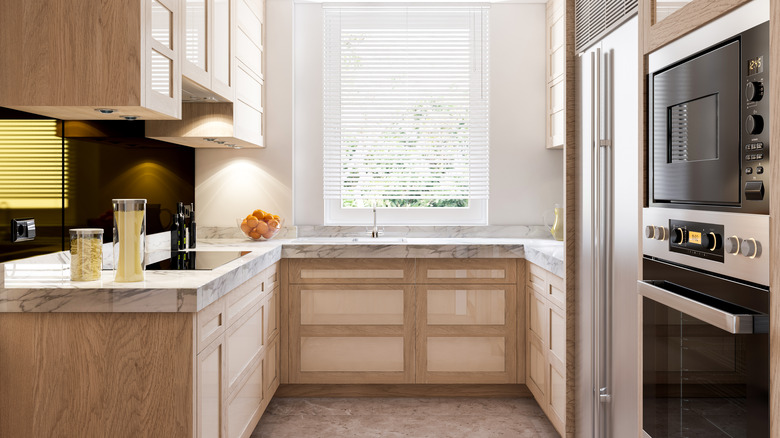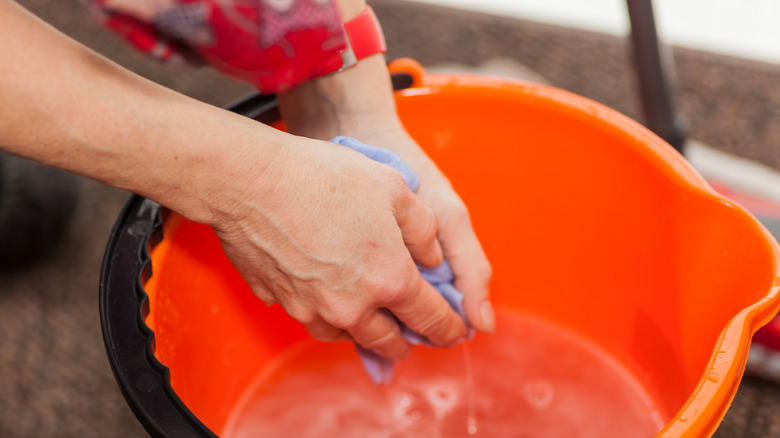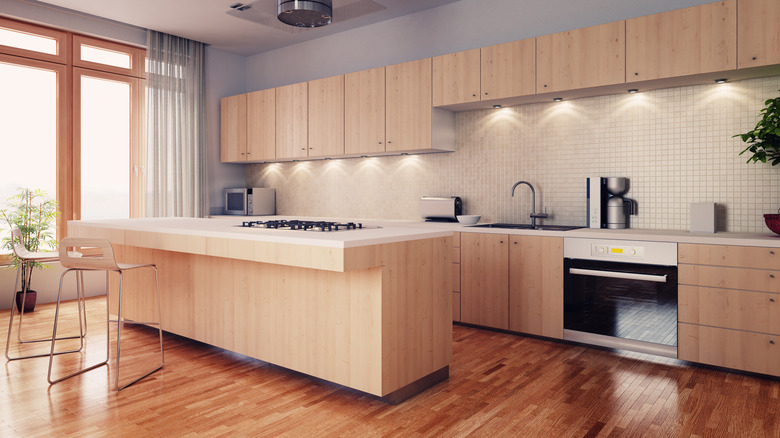The Best Way To Clean Whitewashed Wood Cabinets Without Any Damage
With its light and soft finish, whitewashed wood cabinets breathe new life into an old room by infusing a relaxing neutral tone into your space. However, this delicate finish risks damage from harsh chemicals or abrasive cleaning methods without the correct approach. Cleaning whitewashed wood cabinets demands meticulous care to preserve their beauty and rustic charm.
Understanding the unique characteristics of whitewashed wood is crucial to appreciate the importance of proper cleaning methods. Whitewashed wood often consists of pine or oak coated with a whitewash finish, achieved by thinning white paint with water to produce a semi-transparent layer that highlights the wood grain. This technique is favored for creating a breezy, uplifting home atmosphere. However, the finish's porous nature renders it susceptible to absorbing stains and dirt, posing a challenge for cleaning.
Given its vulnerability, assemble the suitable materials to safeguard the delicate finish. Essential items include a step ladder or stool, soft, lint-free cloths (two to three should suffice), a sponge, a bucket, mild dish soap, warm water, vinegar, baking soda for tackling stains, and wax or furniture polish for the finishing touch. It's important to avoid abrasive scrubbers, ammonia-based cleaners, or potent solvents. These can erode the whitewash finish and harm the underlying wood.
The cleaning process should always begin with dusting. Use one of the lint-free cloths or a microfiber duster to gently wipe down the cabinet surfaces. This initial step removes surface dirt and debris, minimizing the risk of scratching the finish during the subsequent cleaning.
Step-by-step cleaning guide
Step one. Combine one part dishwashing detergent in a bucket with ten parts warm water. If you're dealing with grease or stubborn stains, add a cup of white vinegar to the solution for its natural degreasing properties. However, use vinegar sparingly, as its acidity can sometimes affect the wood finish if used too frequently or in high concentrations. Before you do, test the finish's reaction to soap and water without causing visible damage. Place a small amount of the mixture on your cloth and softly rub it on a discreet section of the furniture, ensuring it does not damage the surface.
Soak the soft cloth in the soap solution and squeeze it out until damp. Just ensure it's not dripping, as that could oversoak your wood. Gently wipe the cabinets. If there is a tough stain or mold, add one cup of white vinegar and one tablespoon of baking soda and switch to a soft-bristled brush. This may help in any detailed areas or crevices as well.
Once you've cleaned the cabinets, you must remove any soap residue. Dip your new clean cloth in warm water, wring it out thoroughly, and wipe down the cabinets. Soap residue can attract dirt and lead to a dull finish over time, so this step is crucial. Immediately after rinsing, dry the cabinets with a clean and dry soft cloth. Do not allow the wood to air dry, as moisture build-up can damage the whitewash finish and the wood underneath.
Adding a layer of protection and maintenance tips
If you want to add a layer of protection and shine to your cabinets, apply a thin layer of natural wax or a furniture polish formulated for whitewashed wood. Great examples include products like beeswax and dry oils, such as linseed or walnut oil. Just ensure an even distribution of the wax or polish throughout the surface area of the cabinets, and continually apply it in the direction of the wood grain. Once completed, buff it up for that softly coated finished look. This step can help nourish the wood and protect the finish, but it's not necessary for every cleaning.
To ensure your whitewashed wood cabinets remain looking their best, follow these maintenance tips: Immediately clean up any spills or splatters using a damp cloth to avoid staining. Regular dusting is crucial to prevent the accumulation of grime that could potentially scratch the finish. Additionally, protect your cabinets from extended exposure to direct sunlight, which can lead to discoloration of the whitewash finish over time. Protective liners can also provide an extra layer of defense for the wood in spots particularly vulnerable to spills, such as beneath the sink.
You'll see that maintaining the pristine condition of whitewashed wood cabinets is more straightforward than it might seem. By adopting these mild cleaning techniques and proactive maintenance measures, you can safeguard your now spotless cabinets, ensuring they stay undamaged, retaining their aesthetic appeal well into the future of your home's interior design.


